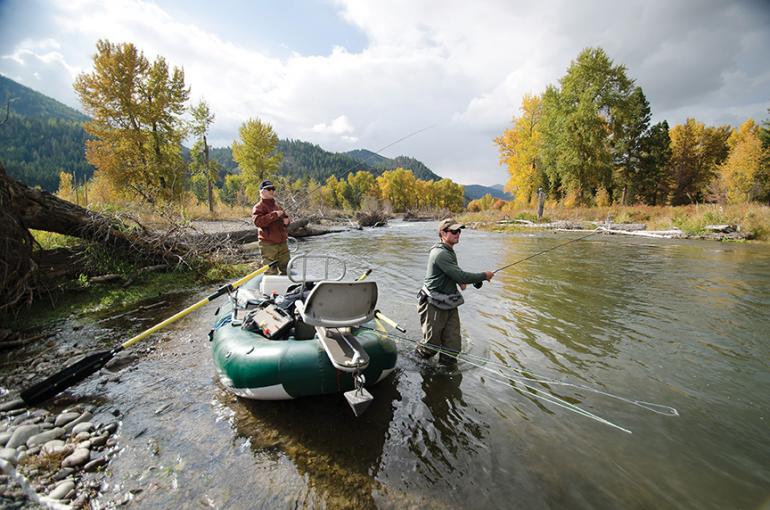The Other Big Three
Fishing road trip to Missoula.
Sometimes, you just have to hit the road. And when that urge arises, western Montana answers the call.
The rivers of Missoula hardly require introduction; the hallowed Blackfoot, Clark Fork, and Bitterroot are as steeped in fly-fishing lore as any other streams on the planet. But to clump them as one would be a mistake, for each has its unique character and offerings, collectively providing more fishing access and options than a lifetime could fulfill.
Clark Fork
The Clark Fork, a fast, narrow, winding freestone above town, takes on a much different character after additional flows are contributed by the Blackfoot, Bitterroot, and Rattlesnake Creek. Below Missoula it becomes wide and slow—that is, until you hit the Class IV whitewater of the Alberton Gorge.
Highly diverse and easily accessible throughout, the Fork can provide whatever fishing opportunity an angler desires. Want technical dry-fly action on smooth water? Look to the Bitterroot confluence and down. Looking for fast, logjam-streamer slinging? Anywhere from Butte to Bonner can satisfy the craving.
For the second-largest town in the state, Missoula has surprisingly good fishing even within city limits. The notorious “Hollywood Hole” in front of the Doubletree Hotel produces almost as many trout as it does gawkers. The cold, clear water of Rattlesnake Creek entering upstream makes this spot one of the best in the entire system, but you may need to share the water.
Blackfoot
The Blackfoot is the epitome of western Montana rivers—narrow, deep, fast, strewn with boulder gardens, and shrouded by pine trees. Its riffles are often daunting, but a diligent angler can solve them with a day or two’s effort.
Dry flies certainly can be the ticket during the largest hatches of stoneflies, spruce moths, and hoppers, but the depth of the river and the amount of summer pressure it receives make top-water a difficult task. Many local guides simply choose to nymph deep year-round, feeding the fish where they live. But there’s barely need to diverge from the standard offerings, as Blackfoot trout love the San Juan worm, prince nymph, and double-dead stone perhaps better than more finely dressed bugs. The hard part is getting down, so don’t forget the split shot. By the same token, a heavy streamer on a sink-tip line can entice the largest fish from the ‘Foot. Make sure to release bull trout gently and quickly, should you encounter one of these threatened, native char.
Bitterroot
Though all three are open all year, the Bitterroot is the only real winter fishery—save this one for a few months' time. The ‘Foot and the Fork run through narrow, sun-starved canyons, creating terrifying ice jams that can completely hide the waters. The ‘Root, however, runs south-to-north through a broad, agricultural valley, receiving plenty of sunlight. The West Fork of the stream is also dammed, providing temperature-controlled water and ice-free flows.
The ‘Root is the dry guy’s dream and the nympher’s nightmare. Piled high with dead cottonwoods, it has to be one of the brushiest major rivers in Montana. This fact rewards accuracy in casting tight to the undercut banks and logjams, and equally punishes errant drifts.
The full buffet of mayflies and caddis emerge from the ‘Root, but it is perhaps best known for its spring skwallas. Though rarely seen, these large stoneflies get trout on the surface early in the season—and scores of boaters as well.





